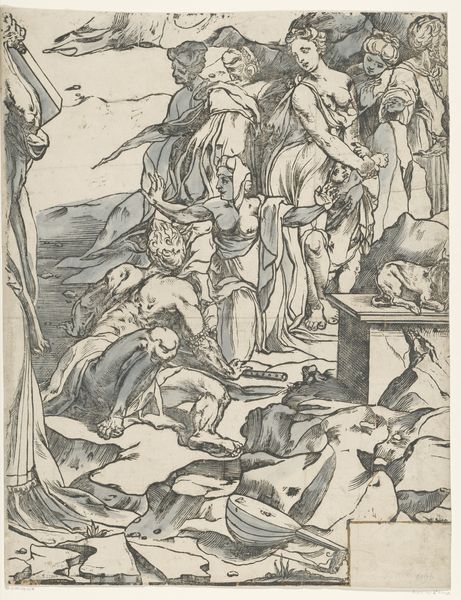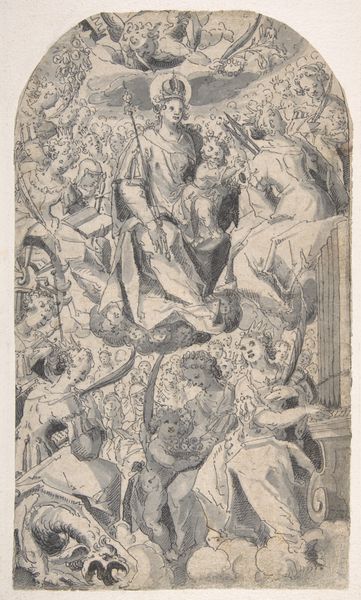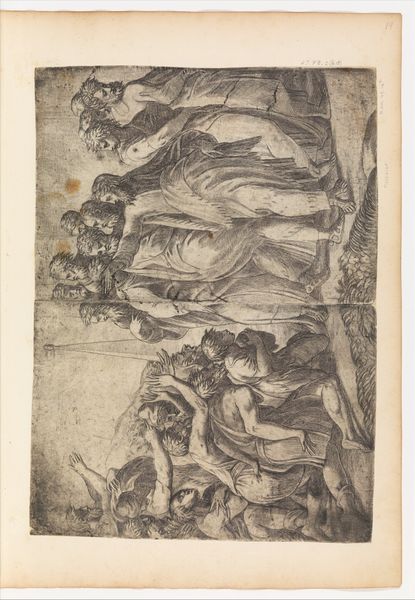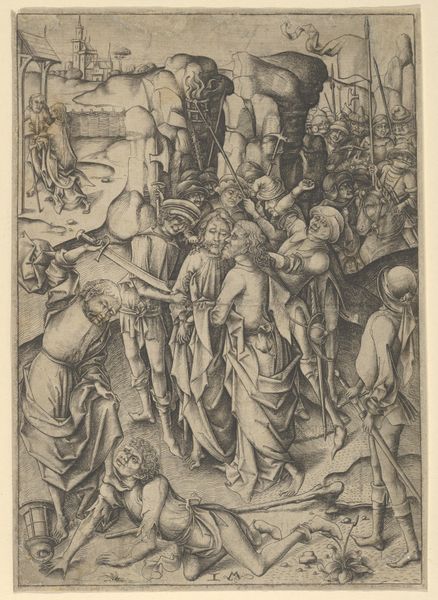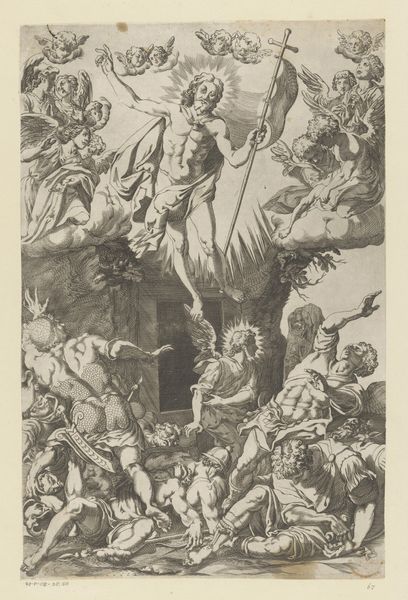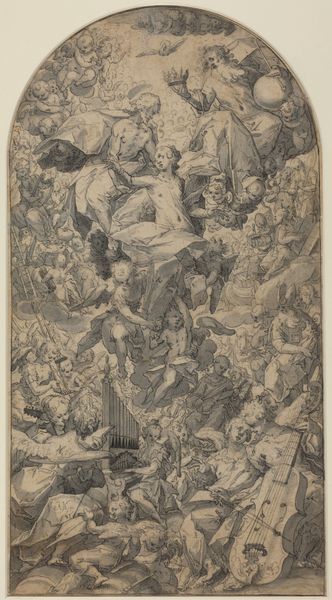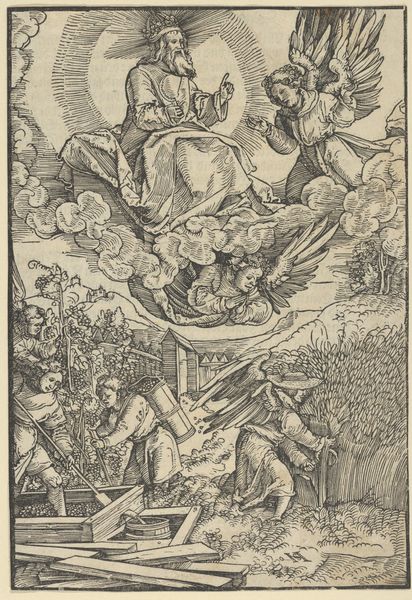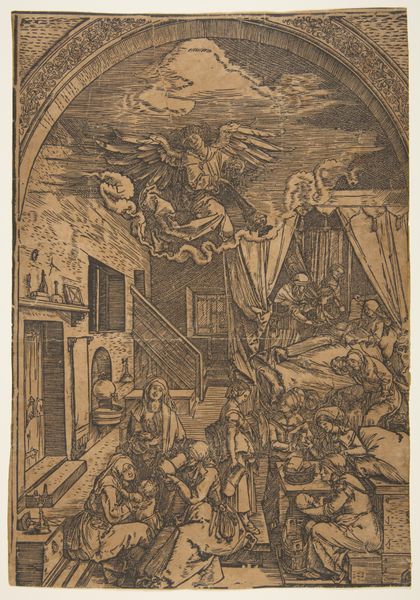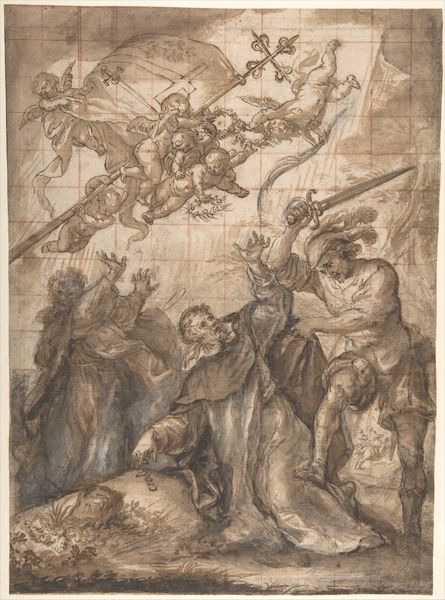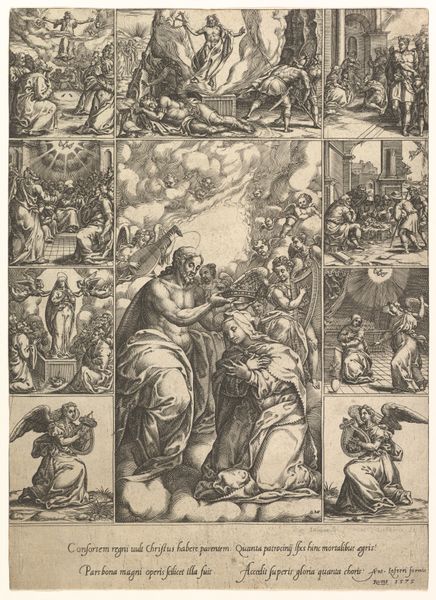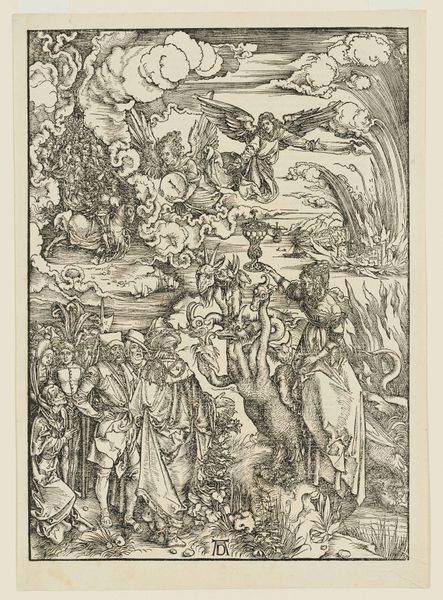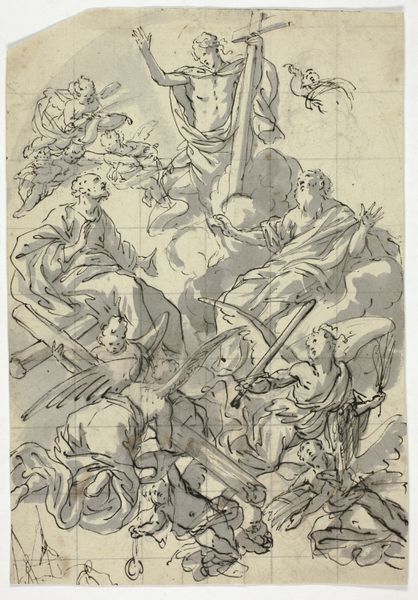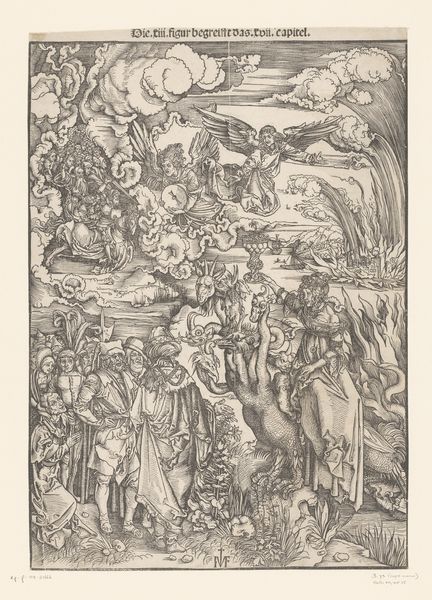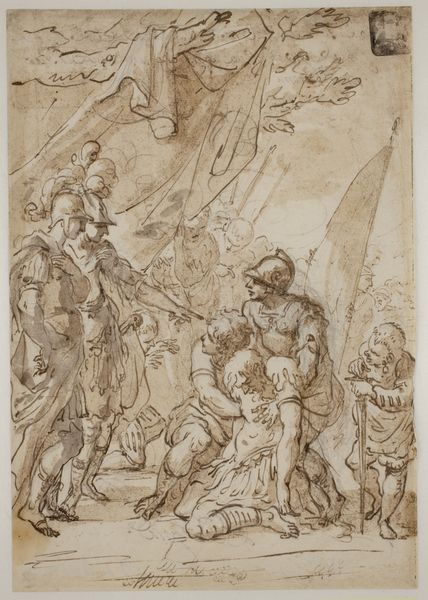
drawing, print, etching, engraving
#
drawing
#
ink drawing
#
allegory
# print
#
etching
#
mannerism
#
figuration
#
history-painting
#
nude
#
engraving
#
male-nude
Dimensions: Sheet: 10 1/4 x 8 1/16 in. (26.1 x 20.4cm)
Copyright: Public Domain
Curator: This is Pierre Brebiette’s "St. Catherine," a print residing here at the Metropolitan Museum of Art, dating sometime between 1610 and 1642. What’s your immediate reaction? Editor: A sense of… baroque chaos. A densely populated scene, all swirling lines and dynamic poses, almost overwhelmingly textural because of the line work of the engraving. Curator: Exactly! It's a Mannerist print, showcasing Brebiette’s training with masters of the era. The iconography is steeped in the traditional narratives surrounding Saint Catherine of Alexandria. See the broken wheel, a clear reference to her attempted martyrdom. The narrative illustrates how she pleaded for conversion while facing death. Editor: And looking at the dense etching lines, the work’s method amplifies the drama. What kind of paper was being circulated back then, and would the consumer purchase these and use them for personal devotion? You mentioned something about masters. Curator: We do believe so; circulating prints helped disseminate knowledge about the styles of major artists and about religious subjects, while popularizing the prints and their associated stories. And Brebiette apprenticed with both Peter Paul Rubens and Hendrick Goltzius. Editor: The influence is clear. The composition feels like a miniature Rubens! This print really emphasizes the gruesome side of religious martyrdom through the figures; the medium, while reproducible, also speaks to individual devotion and appreciation of its subject matter. The materiality is intriguing; it allows us to witness how social values permeate even artistic process. Curator: It speaks volumes about how public sentiment and art were so intertwined in the early 17th century, influencing what Brebiette produced. His choices in visual language, designed to evoke these strong emotional reactions and engage with this audience, reflect the societal demands of the day. Editor: Absolutely. These types of devotional objects, through their manufacture and broad circulation, can tell us so much about the intersection of belief, material culture, and lived experiences. Curator: Indeed! This work provides not only artistic insight but serves as a potent window into that past. Editor: A collision of culture and construction then, perfect for understanding an age!
Comments
No comments
Be the first to comment and join the conversation on the ultimate creative platform.
